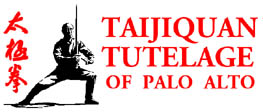
| Press the "Back" button on your web browser to return to the previous page. |

|
Translated from Tung Ying-chieh’s "Taichichuan Explained" by Wu Ta-yeh and Wu Teng Shu-hsien
"You should seek the real kungfu from practicing the postures and movements. When these become skillful, everything will be in order. In practicing for kungfu, it is better not to indulge in the very controversial theories. I have said, ‘People in the past are good in kungfu, but people at present are good in theories.’ In fact, when you over indulge in the many entangled ’theories’ you may become more puzzled and confused, with less concentration in developing your kungfu. The result is retardation of your progress."
Translators’ note: The Chinese term kungfu means time and effort spent, or degree of perfection attained, in any line or work. The American usage of confining kungfu to the hard style of martial arts (such as Shaolin), in contrast to Taichichuan, is not of Chinese origin.
It may be remarked that what Tung meant by "theories" in this context are speculative metaphysics, and not the specific principles guiding the methods of doing the exercise. In his book Tung called his experience put down in writing theories. His theme is that one should concentrate on improving the methods of doing the exercise, with diligent practice, but not indulge in the metaphysics which do not directly help improve the quality of the exercise.